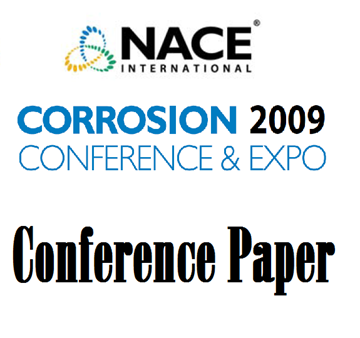Stainless steels S30400 S31600 (austenitic) S32750 (duplex) S31254 and S32654 (super-austenitic) find a wide range of industrial applications. These applications include automotive jewellery and medical industries oil and gas industry equipment offshore platforms food processing equipment heat exchangers chemical process equipment pulp mill bleach systems desalination plants tall oil distillation columns and equipment industrial scrubber systems absorber towers vessels piping etc.The localized corrosion resistance of stainless steels is commonly ranked by the PREN (Pitting Resistance Equivalent with Nitrogen). This parameter may be calculated as a function of the weight percentages of the alloying elements Cr Mo and N: PREN=%Cr+3.3%Mo+16%N. The pitting and crevice corrosion resistances of stainless steels increase with PREN. The PREN values for the tested steels are PREN = 18 for S30400 PREN = 25 for S31600 PREN = 43 for S32750 PREN = 44 for S31254 and PREN = 55 for S32654.The aim of the present paper was to determine the crevice corrosion resistance of these selected stainless steels in chloride solutions at different temperatures. The crevice corrosion repassivation potential or critical potential for crevice corrosion is used as a measure of the crevice corrosion resistance/susceptibility of the tested alloys.Testing techniques and devices developed for crevice corrosion testing of the more resistant Ni-Cr-Mo alloys were used. The crevicing device was based on ASTM G 48 which contained 24 artificially creviced spots formed by a ceramic washer (crevice former) wrapped with a 70 ?m thick PTFE tape. The applied torque was 5 N-m. Stainless steels have been commonly tested using the less severe solid-PTFE crevice formers. Solid-PTFE only allows a maximum applied torque of 0.3 N-m and it relaxes in time. Results from present work are more conservative than previously published research. Testing techniques included Potentiodynamic-Galvanostatic-Potentiodynamic (PD-GS-PD) method which is a modification of the Tsujikawa-Hisamatsu electrochemical method (ASTM G 192) and Potentiodynamic-Potentiostatic-Potentiodynamic (PD-PS-PD) method.Results indicated a broader statistical dispersion of the repassivation potential of stainless steels when compared to that of nickel base alloys in similar testing conditions. The crevice corrosion resistance of the tested stainless steels was in agreement with the PREN. However in certain testing conditions the repassivation potential of S32654 (PREN = 55) was similar to those of S32750 (PREN = 43) and S31254 (PREN = 44) within experimental error. The repassivation potential of each tested steel decreased with increasing chloride concentration and temperature. Crystalline type of attack along with etch pitting was observed on crevice-corroded areas below the crevice former teeth.




